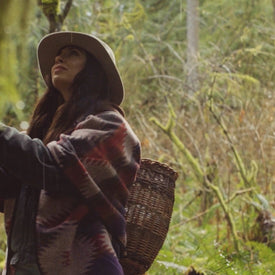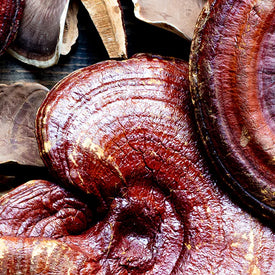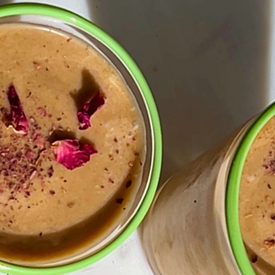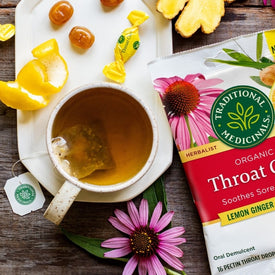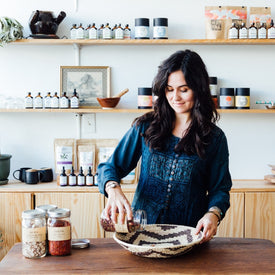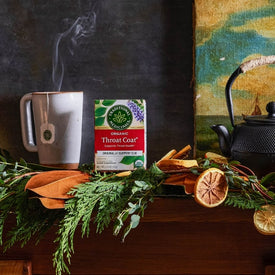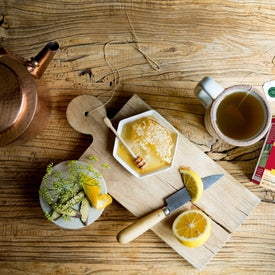Like meditation or yoga, gardening is an age-old practice that engages the body, stimulates the mind, and uplifts the spirit. A recent scientific analysis reported that gardening reduces stress and anxiety, can help ward off diseases associated with inactivity, can keep your mind sharp and happy, and can help you sleep better at night. And that’s saying nothing of the warm fuzzies you’ll feel from tapping into an ancient tradition, while creating habitat for birds, small animals, insects, and microorganisms. So now imagine the added benefits of planting a medicinal herb garden, when you’re growing your own herbs for your own herbal remedies. The benefits of gardening then become limitless!
Planning your garden
Some people like to get a head start on the season by cultivating seedlings indoors during the end of winter and then planting them outside once the spring hits. If your indoor space is small, you may just want to wait until early spring and then plant your seeds outdoors and let them germinate directly in the ground. When planting outdoors, it’s important to consider a few factors beforehand:
- Will you be planting directly into the ground or will you use containers?
- What is your soil like? Does it need to be amended? Will your herbs have good drainage?
- At what angle and at what time of day does the sun hit?
- What is the hardiness zone in your growing area? Will your plants thrive in your climate?
- How often will your herbs need watering? Who can water for you if you’re out of town?
Before getting your hands dirty, consider making a few design sketches, keeping in mind how tall or wide a plant will grow once it’s in full bloom. (For example, plants in the mint family love to spread, so make sure they have enough room to grow.) If you’re enthusiastic about medicinal herbs, you may be tempted to jump right in and plant a whole garden at once. If so, more power to you! However, if you’re new to herb gardening, it’s always smart to start slowly with just a few plants to get started. That gives you some margin for error, so you can study how much light they’re getting, the soil, and how well they’re adapting to your watering schedule without feeling overcommitted. Plan wisely.

Planting your herbs
Healthy plants are born from healthy soil and healthy seeds. If you notice that your soil shows no signs of growth, moisture, or earthworms, you may have to amend it with some organic compost and well-composted manure before planting. Manure is Mother Nature’s ultimate fertilizer, but sometimes it can make the soil dense and clumpy. Don’t be afraid to add a little sand to your mixture to help encourage good drainage. Herbs don’t like wet feet! At Traditional Medicinals, we are strong advocates of organic growing practices, which, of course, starts with organic, non-GMO seeds. We highly recommend Strictly Medicinal Seeds, Fedco Seeds, and Seed Savers for their vast selections and sustainable practices.
Herbs are usually ready to plant once the threat of frost has passed. Once you are ready to plant your seeds, prepare your soil beds with a light raking, making sure to level the soil and remove any rocks or pebbles larger than a gum ball. Then, using your thumb or the handle of a spade or a rake, indent the soil with small holes, spaced to account for their growth. For smaller herbs, 2” spacing between seeds generally works, but for sprawling plants like mints, you’ll likely need more space. Make sure to ask your gardening store specialist or research online ahead of time for optimal results. Then, cover the seeds with a light coating of soil and water them. You can expect sprouts within a couple of weeks.
Most herbs—but certainly not all—prefer 6-8 hours of sunshine per day and well-drained, slightly alkaline soils. Oftentimes, more sunshine results in a higher concentration of essential oils within the herb, making some medicinal herbs more potent. While many herbs prefer the conditions of a dry, Mediterranean climate during the growing season, there are others that thrive in the cool, shady forests, sometimes in acidic soils. Make sure to research which plants are ideal for your garden before you start.

Best plants for your garden
Every garden has its own unique conditions. Below, we’ve created a chart with some of our favorite medicinal plants to get you started on the right foot, but make sure to make your herb garden your own. You can click on some of the individual herb names for a deeper dive into the folklore and medicinal use of the plants.
| Herb | Full Sun | Part Sun | USDA Hardiness Zone |
|---|---|---|---|
| Aloe |
|
|
9-10 (can be grown indoor in cooler climates) |
| Basil |
|
|
Annual |
| Calendula |
|
|
Annual |
| Chamomile |
|
|
Annual |
| Dandelion |
|
|
3-10 |
| Echinacea |
|
|
4-9 |
| Lavender |
|
5-9 | |
| Lemon Balm |
|
|
4-9 |
| Nettle |
|
|
4-9 |
| Peppermint |
|
|
3-8 |
| Skullcap |
|
|
4-9 |
| Sage |
|
5-8 (annual in warmer climates) | |
| St. Johns Wort |
|
4-9 | |
| Thyme |
|
5-9 | |
| Tulsi |
|
Annual | |
| Valerian |
|
|
3-9 |
Have fun
For most plant lovers, gardening is not a competitive sport, so remember to have fun, despite the growing pains that sometimes come with gardening. Enjoy getting to know your plants, and practice listening to them to intuit what they need. In addition to bringing you the mind-body benefits that any steward of the land deserves, gardening will also infuse you with tons of practical information. Once harvest time comes, you’ll realize that there’s nothing more gratifying than making your own herbal remedies from the ground up!


